
Parks Victoria's & NSW tips for preserving the Murray River
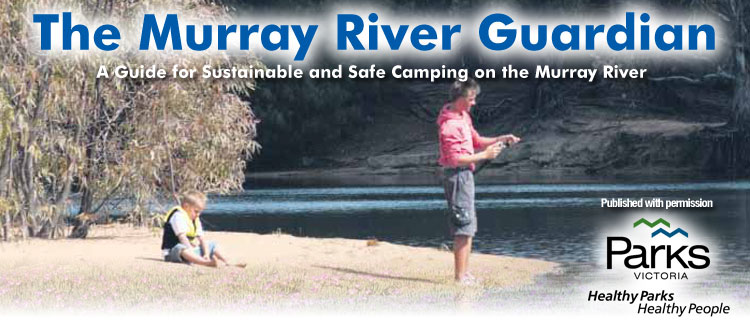
|
||||||||||||||
Parks Victoria- protecting our futureThroughout the world there is a growing recognition of the vital contribution parks make to a healthy environment, to the health of individuals and to a healthy society. Victorians are fortunate to have inherited a world class network of parks and reserves, now accounting for more than 17 per cent of Victoria’s land mass. Parks Victoria is responsible for managing these marvellous national, state, regional, reservoir and major metropolitan parks and conservation reserves. Many well known historic properties and gardens, and Melbourne’s bays and major waterways are also managed by Parks Victoria. Our role is to protect the natural and cultural values of the parks and other assets we manage, while providing a great range of outdoor opportunities for all Victorians and visitors. For further information, call 13 19 63 or visit www.parkweb.vic.gov.au Download the Murray Guardian as pdf |
||||||||||||||
|
|
||||||||||||||
|
Lending a helping hand to the mighty Murray - environmental wateringDepartment of Sustainability and Environment, Victoria Iconic site on the Murray River have received some much needed water this autumn and winter as part of a combined effort between the Victorian Government, the Australian Government and the Living Murray program. From mid April through to early winter, billions of litres of water were delivered to Hattah Lakes, Gunbower Forest and Lindsay, Mulcra and Wallpolla Islands along the Murray. The water is part of an environmental water entitlement - water set aside to help the environment when it is needed. Environmental water is vistal during a drought to protect strategic sites as a refuge for plants and animals. Without environmental water, there is a very real risk some species will continue to decline or become extinct. Environmental watering is vital during a
|
||||||||||||||
Explore Quinn IslandQuinn Island (also known as Scotts Island) is a 40 hectare island, just 1.8 kilometres from the centre of Cobram. Scotts Creek separates the island from the Murray River and the town. Access to the island is via a 15 metre pedestrian bridge crossing the creek. In 1991 local community groups including Apex and Rotary worked with the local council to build an access bridge and install a bird hide on the island. With only pedestrian access, the island is isolated meaning human impacts have been relatively low. There are more than 120 species of grasses and herbs, with a mix of River Red Gum and Silver Wattle Trees. Native fauna species includes Black Swamp Wallabies, Sugar Gliders, Wedge-tailed Eagles, Kookaburras and Koalas. Scotts Creek is home to Murray Crays that can be seen scurrying along the many logs that are also home to other water species such as Trout and Murray Cod. When it is wet, the island is a haven for water birds. Quinn Island is one of the best examples of Riverine Grassy River Red Gum Floodplains along the Murray River. It has been recommended as a Nature Conservation Reserve and is currently managed by Parks Victoria as part Murray River Reserve and part Cobram Regional Park. Quinn Island is popular with locals, visitors and schools with its two kilometres of easy defined walking trails, a large educational bird hide and beaches. It is also well known as a great fishing and swimming area, however strong currents and hidden underwater shelves can catch visitors off-guard. Throughout Quinn Island Aboriginal Scar Trees, Mussel Mines and European Charcoal Pits can be seen. During 2005 the Quinn Island Work for the Dole team, in conjunction with Parks Victoria planned and implemented environmental works to encourage the Cobram community to come, use and explore the unique environmental assets that Quinn Island has to offer. Improvements to walking tracks, interpretation and signage on the island were undertaken to improve people’s enjoyment of the area and to promote the Parks Victoria’s Healthy Parks Healthy People philosophy with a number of awards being won by the Work for the Dole team and Parks Victoria. Lower Murray Darling Catchment Management AuthorityThe Lower Murray Darling Catchment Management Authority covers 6.3 hectares of natural landscapes including rangelands, cropping and riverine areas. The catchment boundaries stretch from the south bank of the Murray River, north to include Broken Hill and the Menindee Lakes, across to just short of Ivanhoe; from the South Australian Border to the western edge of the Murrumbidgee floodplain. The catchment provides a resource for horticulture, wool & meat production, water storage, mining, eco-tourism, recreational fishing, forestry and nature conservation. As one of thirteen CMAs established in NSW under the Catchment Management Authority Act 2003, the LMD CMA is governed by a Board with professional staff working and building partnerships with NRM community groups and local industry groups to assist in sustaining Natural Resource Management and providing future landscape resilience. Funding is provided by the Australian Government’s “Caring for Our Country” and the NSW Government’s “Catchment Action NSW” which allows financial incentives to be taken up by LMD Catchment landholders to improve the environment. LMD CMA targets include:
More information can be found at: |
||||||||||||||
Take care near trees
|
||||||||||||||
Pomona Reach and Kulcurna
|
||||||||||||||
Protecting the pythonsParks Victoria
Carpet Pythons are different from other Victorian snakes because they have a broad head and a narrow neck. They have a distinctive ‘carpet-like’ pattern of grey and black patches on their back and sides, and very small scales on top of the head. In Victoria they can grow to almost two meters. Chris and Rose are often called on for ‘show and tell’ days. His talks are full of amazing facts about Carpet Pythons, like the fact that they are non-venomous, and that they have heat sensors in their lips which help them locate warm blooded prey at night. Chris says he doesn’t take Rose out just to show her off, but to educate people who think the only good snake is a dead snake. Carpet Pythons have teeth, not fangs, and they move by squeezing their muscles instead of pushing themselves along like most snakes. But probably the most fascinating fact is that pythons have ‘smellivision’ - their forked tongues smell in stereo, picking up scents from either side, to send them toward the strongest smell, and their prey. One of the most important messages Chris has is that Carpet Pythons are in trouble in Victoria.There are not many of them left because of land clearing, too much firewood collection, and being hunted by dogs, foxes and cats. It is hard to find out how many live in the Murray Valley now because they are so hard to see. Many people live quite close to pythons without being aware that they are so near. These days there are very few in northern Victoria, although they are said to live right along the Murray from Mt Lawson in the Northeast to the South Australian Border. Along the river they make their homes in hollow logs and trees and also use rabbit warrens in the summer. Those that live in the granite hills of North East Victoria also live in rock crevices. In winter they like to make use of warm roof spaces in houses and farm buildings as well. Many people consider it a privilege to share their homes with wild Carpet Pythons. However, even pet pythons can be hard to find once they go into hiding for the winter. Rose went missing in Chris’s house last autumn, and despite many hours of searching by him and his wife, she could not be found. Then they arrived home one day in October to find the kitchen littered with broken cups and plates from the dresser. There was Rose stretched out enjoying the warm spring sunshine and looking for a feed after her long winter fast. Pythons are usually active only during the warmer months. They are not an aggressive snake and will usually only respond if poked with a stick or hassled by people or dogs. So if you come across one this summer, don’t disturb it and it will move on. Our Carpet Pythons need to be looked after just like any other native creature. |
||||||||||||||
Clean up the Murray partnership removes 60 bags of rubbishClean up Australia and Parks Victoria
The two organisations worked together to clean up sites at Cobram, Echuca and Cohuna where participants had the opportunity to speak with Ian Kiernan AO – the founder and Chairman of Clean Up Australia – and hear his views on how to protect our iconic river systems. Other sites along the Murray were registered with Clean Up Australia by members of the public. A total of 60 bags of rubbish were collected from the three key sites – over half of the rubbish collected could have been recycled. At Cobram, the total amount of rubbish collected was eight cubic metres – five of that was rubbish and three of recycling. The rubbish at this site varied from camping tables to windscreens and a campfire full of bottles and cans. At Echuca, nine bags of rubbish was collected – six of which were recyclable. Mostly cans and bottles were found here, but also beach towels, chairs and a jar of pickled gherkins! Along the banks of the Gunbower Creek at Cohuna, 19 bags of recycling and 10 bags of rubbish were collected. An empty chemical drum was removed from the water’s edge and panels of plastic shade material were also found. Ian Kiernan said the Murray is an iconic Australian river system and the partnership with Parks Victoria will assist in raising community awareness that this is an invaluable resource we all need to look after. Clean Up Australia Day is held in the first Sunday in March each year with hundreds of thousands of Australians getting stuck in to clean up their local environment by collecting and removing rubbish. These events helped to create awareness of the devastating impact of pollution, including litter and marine debris, on the health of the Murray River and its environs. 2010 will mark the 20th anniversary of Clean Up Australia Day, and following on from the success of the 2009 Clean up the Murray event, we encourage you to spend some time helping to clean up the Murray as part of the anniversary celebrations. Clean Up Australia Day needn’t be just one day a year – you can register a clean up site along the Murray River or associated waterways at www.cleanup.org.au for any day of the year. Site supervisors are provided with cleanup bags, safety information, registration forms and a certificate of thanks for helping to Clean Up Australia. You can help out by registering a site of your own or just by spreading the word about this great initiative where, as a community, we can work together to restore the health of the Murray River. |
||||||||||||||
8 Important Tips to preserve the Murray's Parks
|
||||||||||||||
2010 Club Marine Southern 80 Ski RaceMoama Water Sports Club Inc
Many local businesses are providing support for the event, so if you see a collection tin in one of these businesses, lease drop a few coins in! We are sure that you want to be able to enjoy “The World’s Biggest Ski Race” for many more years to come. The weekend will once again kick off with the Cantech Engineering ‘Breakfast with the Stars’, which will be held in Moama at the Kerrabee Sound Shell grassed area, just behind the Council offices.This will be the first opportunity for many of the boats and crews to show off their fabulous new paint jobs and art work. With many millions of dollars worth of equipment on display and a barbecue breakfast available, this is well worth a look. Breakfast will be followed by scrutineering at the MWSC offices in Annesley Street, Echuca. While all boats do not need to be scrutineered, there will still be plenty around for those who need more of a fix of horsepower, chrome and amazing paintwork. The race launch will be held on Friday evening on the banks of the Murray River in the corporate tent at Victoria Park. Tickets are available via our website www.southern80.com. au. Saturday morning will see the start of ski racing at the Club Marine Southern 80. A static display is held in the main street of Echuca packed with boats of every colour and type from outboards, inboards, huge gleaming turbos - many with paint work worth more than the family car - trailers gleaming in the morning sun and crews wearing the team colours. Social classes will run on Saturday morning from Torrumbarry along the full course. This will give spectators some great views of some great racing as the early classes in social are only a few minutes behind the record for the weekend and these guys and girls ski on short ropes only 50ft long. Once they have all finished at approx 11.30am, racing moves back to the 5 mile boat ramp for all the regular Saturday afternoon races, starting with the veterans and working through all the age groups till we reach disabled followed by our future stars of ski racing, the Tadpoles (under 10s). Then it will be for the Tip Top Bakers Blitz to be run and set up pole position for Sunday’s racing. The President’s Dash will follow the Bakers Blitz and these crews will also be shooting it out for their pole position! With about 40 of the fastest boats in ski racing competing over 20 kilometres for their pole position, we should be able to see some amazing water ski racing on Saturday afternoon. Once these boats have all finished presentation of trophies to all the day’s placegetters will commence at Victoria Park. Sunday morning will have all the expert classes, except for those who earned their starting position in either the Tip Top Bakers Blitz or the President’s Dash, starting from Torrumbarry at 8.30am. Once all these classes have started and completed the course, there will be some amazing entertainment at half time.The Moomba Display skiers will be performing throughout the weekend There will be a freestyle motorbike display from Whipp Industries on land, along with a number of trade sites with ski gear, boats, sunglasses and more. Check the website for more details closer to the event. Following the entertainment, at around 2.00pm the top 40 will be counted down. With only these 40 to finish and lots of clear water ahead, there will be some great viewing along the course and at Victoria Park. After racing you’ll be able to get up close to the winning boats and crews. Presentations of all Sunday’s events and the other special awards will be held soon after the Top 40 Finish at around 4.30pm. Victoria Park is the place for all the action over the weekend with the big screen giving us live coverage of the race over the weekend. There will be a food court area as well as a designated dry area for families. Lots of trade sites for you to view the newest products, as well as the Southern 80 merchandise shop is the place to purchase your 2010 Southern 80 merchandise. We would just like to remind all campers over the Southern 80 weekend to be aware of any total fire bans, as we are heading for a long dry, hot summer. Please also take care when travelling, respect your camping area and, remember "carry in and carry out”, so that it’s still there for you to use next year. We are looking forward to yet another great weekend of racing, weather and excitement. Don’t forget keep up to date on all that’s happening with the 2010 Club Marine southern 80 ski Race at www.southern80.com.au. You can also follow all of our happenings on Twitter. |
||||||||||||||
Lake Moodemere Regatta - 150 years
This event will mark 150 years since the first regatta was held on 4 February 1860. This makes the regatta the oldest rowing regatta in Australia. The first regatta originated with the crews of the paddleships that traded up and down the river between Echuca and Port Wahgunyah. Port Wahgunyah (as it was known then) was an important commercial hub being a staging point to the goldfields at Mayday Hills (Beechworth) and the great pastoral stations that sprung up with the advent of the squatters. The regatta was staged as a professional event for its first 30 years. The prize pool for the feature races was over ₤75 - a considerable fortune even in the gold rush years. Bookmakers would attend the regatta and the settling of bets would often take place at one of the local hotels at the conclusion of the regatta. In the 1890s the regatta changed from professional to amateur and was run under the auspices of the Victorian Rowing Association. However, some the habits of the professional era were hard to break such as the taking of bets, much to the disdain of the VRA. From the reports in the Rutherglen Sun and the Corowa Free Press, the regatta quickly established itself as the social occasion for the year. Civic functions were held for competitors and crowds into the thousands attended the regatta. The regatta has grown in fame and popularity and there are now over 600 entries for the regatta with more than 1,000 people competing or watching over the two day event. At the recent Rowing Victoria Awards, the Murray Rowing Association won the people’s choice for the most popular regatta in Victoria. This year the Murray Rowing Association will host the Victorian Sprint Four and Sprint Eight Championships for the first time. Racing will start at 8;00am on both days with an event coming down the course every three minutes until 5:30pm. Entry to Australia’s oldest regatta is free. |
||||||||||||||
Wildlife Rescue
|
||||||||||||||
There’s so much to see and doCall into a Visitor Information Centre to find information on other great things to see and do in the Murray region! Corryong - Jack Riley, known as ‘The Man From Snowy River’, is buried in the cemetery at Corryong. There is an excellent collection of local memorabilia housed at the museum, including tunnelling equipment from the Snowy Mountains Scheme. Lake Hume - 16 kilometres upstream of Albury, is the main operating storage of the Murray River system and more than four times the size of Sydney Harbour. Fishing from boat or bank is the main attraction. The waterway attracts catamarans, dinghies, windsurfers and powered crafts. Wonga Wetlands, on the Murray River adjacent to Albury-Wodonga, are proof that a City’s Treated Waste Water can be a valuable resource for the whole community. Albury City’s Waterview Treatment Works transforms eight – ML/day of sewage into high-class reclaimed water which is used in Summer and Autumn to irrigate 350ha of tree lots and pasture and in Winter and Spring to fill up the 80 hectares of Wonga Wetlands. These Wetlands are a bird-watcher’s and photographer’s paradise!! There are five bird hides, walking trails with interpretive signage, a Wiradjuri Cultural and Education Precinct, maps and information, a Visitor Centre, toilets and picnic facilities and the Wetlands are open to the public dawn to dusk. The Aquatic Environment Education Centre at Wonga Wetlands is open for school and community education during term time and has attracted twelve thousand students in its three years of operation. The Centre has now been granted the high status of being an accredited Wetlands Training Centre, one of only four in Australia. Wetland Ecological research by universities, TAFEs and the Murray - Darling Freshwater Research Centre, is carried out at Wonga Wetlands. Lake Moodemere - A natural lake declared a wildlife refuge in 1889, Lake Moodemere has a wide range of bird life. It is also the venue for the Moodemere Masters Ski Tournament held towards the end of January. There is no camping at Lake Moodemere. Lake Mulwala is a haven for birds such as pelican and ibis and native fish.The lake is over 15 kilometres in length and is used all year round for a variety of water sports. Work on the lake began in the 1930s with the damming of the Murray River at the Yarrawonga Weir as part of the Murray-Darling Irrigation Scheme. The eastern end of the lake offers shelter among the dead trees while the western end has a large expanse for sailing and boating. Murray cod, trout and yellow belly seem to thrive in the lake. Enjoy picnicking, bird watching, fishing, boating, sailboarding, water-skiing, swimming, canoeing, sailing, and paddle boat cruises. Access is from the Murray Valley Highway, Yarrawonga-Benalla Road or Yarrawonga-Wangaratta Road. Byramine Homestead is just off the Murray Valley Highway, 15 kilometres west of Yarrawonga. It has an unusual octagonal design with a central fortress room that was used for protection against bushrangers and other intruders. Barmah State Park and State Forest, situated on the Murray River floodplain north of Nathalia, protect the largest River Red Gum forest in Victoria. The complex ecology of the forest is closely linked to the Murray River and its flooding regime, which creates a diverse natural habitat for a variety of wildlife, particularly waterbirds. Wildlife abounds throughout the forest. Eastern Grey Kangaroos, Emus and Koalas are common. Over 200 species of birds have been recorded in the forest, one of Victoria’s largest waterbird breeding areas. The Barmah Lakes area is popular for both day visitors and campers alike and has toilets, fireplaces and tables provided. Basic facilities are also provided at Ulupna Island. Access to the 12 major entrances is available from the Moira Lakes Road, the Barmah-Picola Road, and the Murray Valley Highway. Tocumwal Regional Park - On the Victorian side of the Murray River at Tocumwal is the Tocumwal Regional Park. Access to the Park is via the Goulburn Valley Highway. Pick up a map from the Cobram Tourist Information Centre or from Parks Victoria. The park contains many beautiful beaches. Downstream from the Tocumwal Bridge are Apex Beach, Grassy Beach and Top Beach. To access these areas, turn left before the bridge and follow the main track towards the ‘Time Out Caravan Park’. Turn right before the bridge to access Tocumwal Regional Park and enjoy Mulberry Beach, Pebbly Beach and Finley Beach. Mulberry Beach has toilet facilities provided. Cobram Regional Park contains many popular sites that become very busy during the summer months. Access the upstream section of Cobram Regional Park via Cemetery Road, approximately six kilometres east of Cobram. Dicks Bend and Dicks Island provide river access with no facilities. Around the township of Cobram there are many excellent sites. Thompsons Beach is a Day Visitor Area with all facilities provided (toilets, picnic tables, barbeques), and has possibly the best example of a sandy beach anywhere along the Murray.You can access Thompson’s Beach by turning left just before you cross the bridge on Barooga Road. Other sites of interest in Cobram Regional Park include Big Toms Beach and Little Toms Beach, Dead River Beach, Horseshoe Beach, Twin Knobs Beach and Scotts Beach. Echuca Moama - The port of Echuca was once the biggest inland port in Australia. The port complex includes historic buildings such as the Bridge Hotel, the Star, bond store and customs house. Enjoy sightseeing, strolling around the historic precinct, visiting local crafts or try travelling down the Murray on a paddle steamer. The Port of Echuca is on the Murray Esplanade. Terrick Terrick National Park - The grasslands of Terrick Terrick National Park have significant conservation value. These northern plains grasslands, together with the other diverse environments protected within the park, provide habitat for numerous endangered flora and fauna species. An abundance of mammal and reptile fauna, plus many species of birds, also contributes to the park’s important environmental values. The park is vital in maintaining regional biodiversity, protecting significant landscape values and preserving important cultural and archaeological features. Featured within its 3,850 hectares is the largest block of White Cypress Pine woodland in Victoria, which are rare to the region, and the granite outcrops of Mount Terrick Terrick, Bennetts Rock and Reigals Rock. Gunbower Island State Forest - Gunbower Island, near Cohuna, lies on the floodplain between the Murray and Gunbower Creek. It has a water frontage of 130 kilometres with 20,000 hectares of state forest covering about 80 per cent of the island. Until damming, the red gum and box forests were flooded every year and today still depend on the occasional inundation. The forests and wetlands draw fisherman, canoeists, campers and walkers. The great varieties of waterbirds are a feature. There are camping and picnic spots along the length of the Murray and Gunbower Creek. The island has a circuit walk that takes 7-8 hours. There are numerous tracks to the island from the Murray Valley Highway. Access through Cohuna (where there is a caravan park and motels), Gunbower or Koondrook. Swan Hill - In 1836, Mitchell camped on a rise by the Murray that he named after the swans that disturbed his night’s sleep. Swan Hill Pioneer Settlement is an authentically recreated nineteenth century Mallee town that also features displays of Aboriginal implements. The Wemba Wemba and Wati Wati tribes lived in the Swan Hill area. Tyntynder Homestead - Tyntynder Homestead, 16km north of Swan Hill on the Murray Valley Highway, was the first brick veneer building in Australia. It is furnished in the style of the 1870s which was the squatter period. Major Mitchell Trail - Major Thomas Mitchell passed through Victoria in 1836 naming all the country south of the Murray River ‘Australia Felix’. It was a landmark journey in Australian History as shortly after his expedition the whole of the region was opened up and settled by the new inhabitants of the continent. The entire Trail covers 2,100 kilometres and enables modern day motorists to retrace Mitchell’s journey. Places along the way include Mildura, Swan Hill, Horsham, The Grampians, Ballarat, Bendigo, Benalla, Wangaratta and Mt Macedon. Follow the Major Mitchell Trail signs. Kings Billabong Wildlife Reserve - Bordered by a wide stretch of the Murray River near Mildura and home to majestic River Red Gums and a fantastic variety of birdlife, Kings Billabong Wildlife Reserve is popular with locals and visitors alike. The reserve features a large, sleepy billabong that was, for many years, the main water supply for nearby vineyards and orange groves. Take the self-guided walk to the historic Psyche Bend Pumps and enjoy wonderful bird watching along the way or a great canoe trip with Wild Side Outdoors. Psyche Bend Pumphouse - Designed by George Chaffey, this is the oldest intact irrigation station in Australia. George and Ben Chaffey, engineers from Canada, were invited by the Victorian Government to set up an irrigation system. They cleared land and dug channels. Huge pumps were placed in 1889 at Psyche Bend where water was drawn from the Murray and pumped to Kings Billabong. From there, through a series of pumps and open channels, it was distributed throughout the area. The Chaffeys gave birth to one of Australia’s biggest and most important vine and fruit growing districts. Red Cliffs Scenic Reserve – The town of Red Cliffs is named after the majestic cliffs located just five kilometres east of the township on the mighty Murray. Excellent photo opportunities are available at the Red Gum Gully Boardwalk and at the recently completed viewing platform located at the Snake Gully carpark. Wallpolla Island is 9,800 hectares of floodplain vegetation including Red Gum, saltbush plains, seasonal lakes and grasslands. Middens and hearths remain from Aboriginal occupation and the land has been used for grazing and forestry since European settlement. Activities include fishing (a Victorian fishing license is required for fishing on the island), boating and camping and access is 25 kilometres from Merbein. Lindsay Island forms part of Murray Sunset National Park and is located 90 kilometres west of Mildura towards the South Australian border. Lindsay Island is intersected by numerous small creeks carrying floodwaters from the Murray River into swamps, billabongs and flood plains. The island is home to a significant array of plants such as River red gums and black box woodlands and animals such as wedge tailed eagles, emus, red and western grey kangaroos. It has a long history of human occupation by indigenous people followed by early European settlers grazing sheep and cattle. It is a popular destination for camping, fishing, driving and canoeing. Hattah-Kulkyne National Park and Murray-Kulkyne Park - Just off the Calder Highway 70 kilometres south of Mildura, Hattah-Kulkyne features mallee and woodland country, magnificent River Red gums, and a lake system seasonally filled by creeks connected to the Murray River. The tranquil waters of the extensive lakes system fed by Chalka Creek contrast with the mallee scrub and cypress pine woodland, one of only 3 Biosphere Reserves in Victoria. Camping, walking, bike riding, driving and canoeing are popular activities. Two basic campgrounds are located in the National Park at Lake Hattah and Lake Mournpall, whilst there are many riverside bush camps in Murray-Kulkyne Park where generators and dogs on leads are permitted. Fishing licences and supplies are available at the nearby Hattah store. Lock 9 and Lake Cullulleraine - The lake is natural, but is kept filled from Lock 9 on the Murray River to supply water to nearby properties. Black Box and reed beds fringe the lake and activities include boating (sail and power boats), swimming, picnics, camping and caravans (powered sites available). Access is via Cullulleraine. Merbein Common - Riverbank vegetation, billabongs and native pine cover this site of original pumping servicing the Merbein irrigation area. Good for barbecues, boating, fishing, swimming and walking. Access is via a sealed road 5 km from Merbein. |
||||||||||||||
Tell your friends you found this at murrayriver.com.au!
Copyright Discover Murray 2025. This site or any portion of this site must not be reproduced, duplicated, copied, sold, resold, or otherwise exploited for any commercial purpose that is not expressly permitted by DISCOVER MURRAY.






 The Royal Edinburgh Military Tattoo 2023 - Arts On Screen
The Royal Edinburgh Military Tattoo 2023 - Arts On Screen An Afternoon Of Classical Piano
An Afternoon Of Classical Piano A Celtic Christmas by A Taste Of Ireland
A Celtic Christmas by A Taste Of Ireland Native Flower Showcase
Native Flower Showcase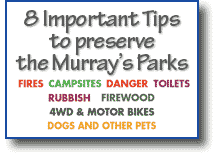
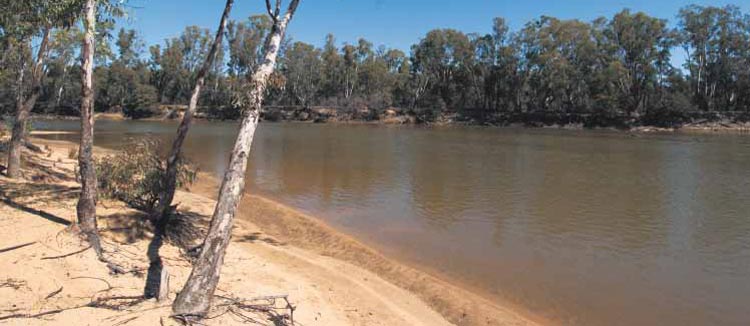
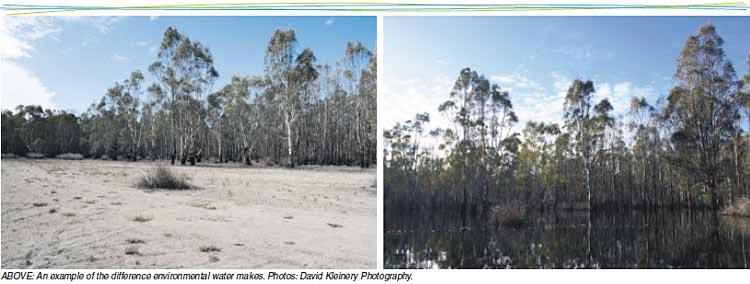
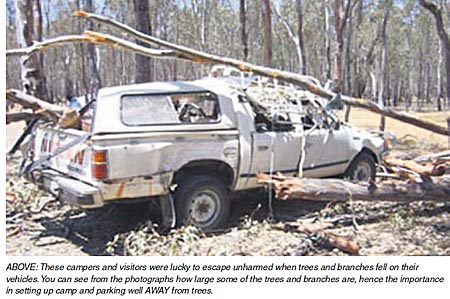 There are risks involved in being outdoors, but there are things you can do to minimise the risk to you and others. One of the risks in the parks and reserves along the Murray River is trees falling or dropping limbs.
There are risks involved in being outdoors, but there are things you can do to minimise the risk to you and others. One of the risks in the parks and reserves along the Murray River is trees falling or dropping limbs.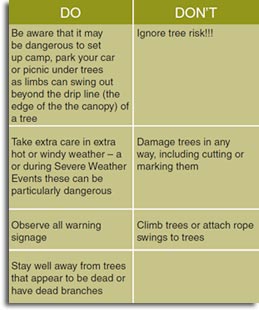 This is why the safest place for all visitors to enjoy a rest, pitch their tent, park their car or have a picnic is in a clear area AWAY from large trees.
This is why the safest place for all visitors to enjoy a rest, pitch their tent, park their car or have a picnic is in a clear area AWAY from large trees.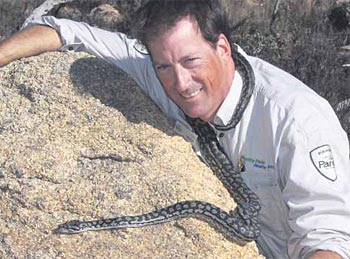 Parks Victoria Ranger, Chris Mercier, has a close relationship with Carpet Pythons. He even keeps his favourite, ‘Rose’, in his lounge room. Chris has a special permit which allows him to keep Carpet Pythons that are taken from people who keep them illegally.
Parks Victoria Ranger, Chris Mercier, has a close relationship with Carpet Pythons. He even keeps his favourite, ‘Rose’, in his lounge room. Chris has a special permit which allows him to keep Carpet Pythons that are taken from people who keep them illegally.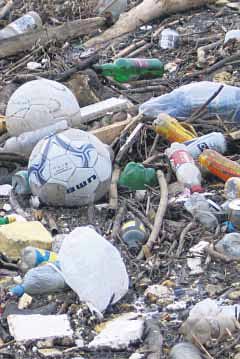 The Murray River was the focus of a major clean up effort in May 2009 – the result of a successful partnership between Clean Up Australia and Parks Victoria.
The Murray River was the focus of a major clean up effort in May 2009 – the result of a successful partnership between Clean Up Australia and Parks Victoria.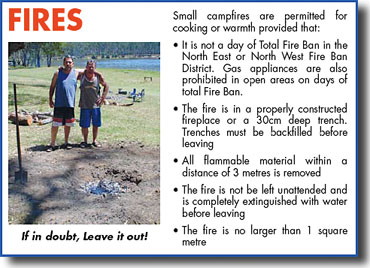
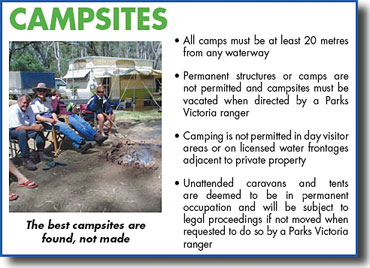
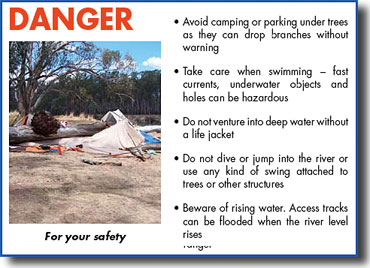
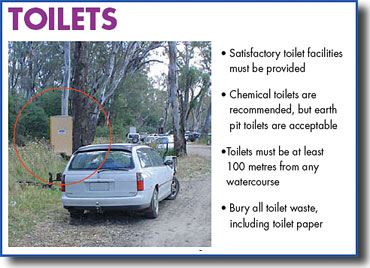
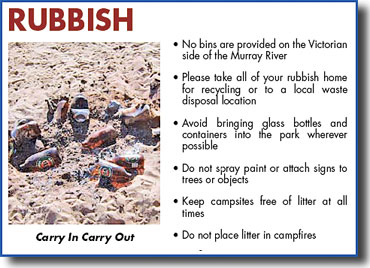
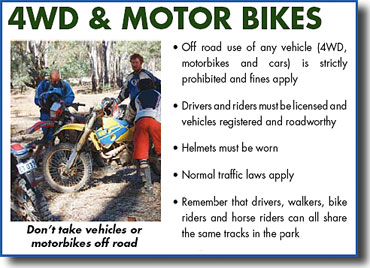
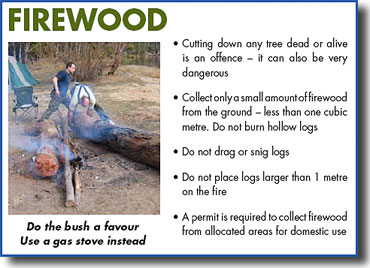
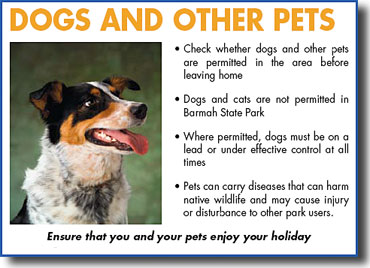
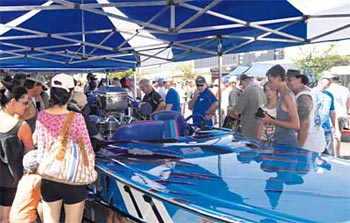 The 2010 Club Marine Southern 80 Ski Race will be held from 12-14 February continuing with the new racing format started at the 2009 race. Hopefully the extreme weather that hit us all last summer doesn’t arrive again for the 2010 event.
The 2010 Club Marine Southern 80 Ski Race will be held from 12-14 February continuing with the new racing format started at the 2009 race. Hopefully the extreme weather that hit us all last summer doesn’t arrive again for the 2010 event.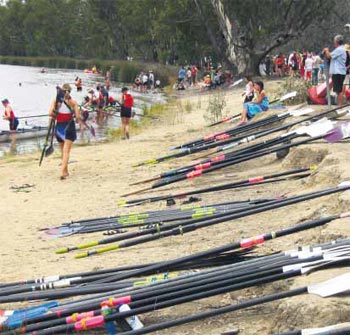 The Murray Rowing Association will host the 144th annual rowing regatta at the picturesque Lake Moodemere at Rutherglen on the weekend of 9-10 January 2010.
The Murray Rowing Association will host the 144th annual rowing regatta at the picturesque Lake Moodemere at Rutherglen on the weekend of 9-10 January 2010. 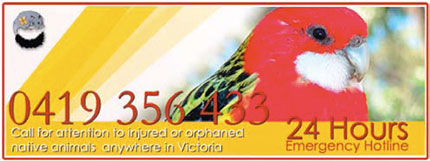 What to do with injured wildlife
What to do with injured wildlife 